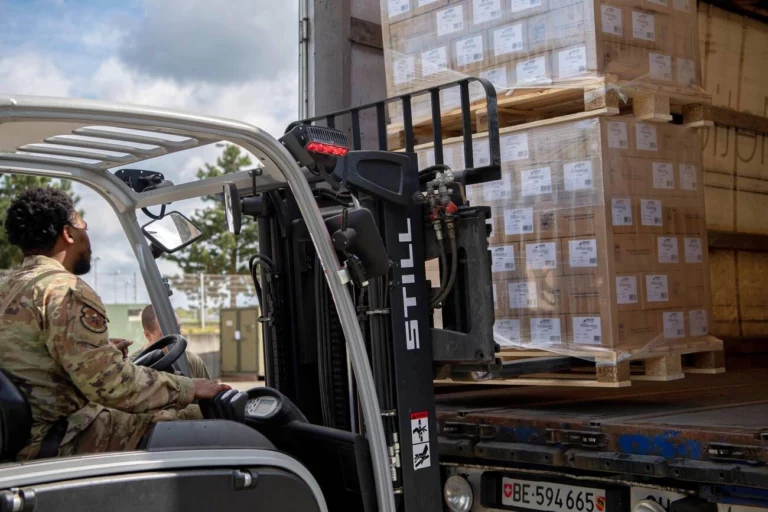Air IGM: Complete Guide for Efficient Cargo Clearance and Tracking
Table of Contents
The global air freight market continues to grow at a rapid pace, with businesses increasingly relying on swift international shipments to maintain their competitive edge. However, navigating the complex web of customs documentation can quickly become overwhelming. Among these critical documents, the Air Import General Manifest (IGM) stands as a cornerstone of the import process, yet many shippers struggle to fully understand its significance and proper handling.
Whether you’re a seasoned logistics professional or new to international shipping, mastering Air IGM procedures can make the difference between smooth sailing and costly delays. This comprehensive guide will walk you through everything you need to know about Air IGM – from the basics to advanced tracking strategies – empowering you to optimize your import operations.
What is Air Import General Manifest (IGM) and Why It Matters
The Air Import General Manifest, commonly known as Air IGM, is a detailed declaration document submitted to customs authorities by the carrier (airline) or their authorized agent. Think of it as the official introduction of your cargo to the destination country’s customs department.
The Air IGM contains comprehensive information about all cargo onboard an aircraft arriving from a foreign destination. It serves as the first official notification to customs about the nature, quantity, and ownership of goods entering the country. This document plays a critical role in the customs clearance process, acting as the initial screening tool for authorities to assess potential risks and determine the level of scrutiny needed for each shipment.
According to the World Customs Organization’s SAFE Framework of Standards, advanced cargo information like the Air IGM is “essential for effective risk management in international trade security” and forms the foundation of modern customs processing systems worldwide.
Unlike other shipping documents that focus on individual consignments, the Air IGM provides customs with a bird’s-eye view of all cargo on a specific flight, creating a systematic approach to managing incoming goods.
Legal Requirements and Compliance Importance
The legal ramifications of improper Air IGM filing extend far beyond mere administrative headaches. Most countries have strict regulations governing the submission of import manifests, with significant penalties for non-compliance.
In India, for example, the Customs Act mandates that carriers must submit the Air IGM within 24 hours before arrival for long-haul flights, and according to the Central Board of Indirect Taxes and Customs (CBIC) guidelines, penalties can range from 50,000 to 200,000 rupees for violations. Similar regulations exist in other countries, with some jurisdictions even authorizing the seizure of goods or criminal charges for serious infractions.
As outlined in the US Customs and Border Protection’s Air Automated Manifest System requirements, failure to file timely and accurate manifests can result in penalties up to $5,000 for the first violation and up to $10,000 for subsequent violations.
Beyond avoiding penalties, proper Air IGM compliance offers several tangible benefits:
- Faster customs clearance and reduced dwell time
- Lower risk of cargo detention and associated storage fees
- Preservation of your company’s compliance record and reputation
- Smoother overall supply chain operations
Research published in the Journal of International Logistics and Trade found that proper documentation compliance, including accurate manifest filing, can reduce overall import processing times by up to 35% compared to shipments with documentation issues.
The Complete Air IGM Filing Process for Importers
Essential Documentation Required for Air IGM Filing
A successful Air IGM filing begins with gathering the right documentation. While specific requirements may vary slightly by country, the core documents typically include:
1. Master Airway Bill (MAWB): Issued by the airline or freight forwarder, this document covers the entire shipment from origin to destination airport.
2. House Airway Bill (HAWB): For consolidated shipments, each individual consignment within the larger shipment requires its own HAWB.
3. Commercial Invoice: Provides detailed information about the goods, including description, quantity, and value.
4. Packing List: Offers a comprehensive breakdown of the shipment contents, including dimensions, weight, and packaging details.
5. Certificate of Origin: Verifies where the goods were manufactured or produced.
6. Import License (if applicable): Required for restricted or controlled goods in many countries.
The International Air Transport Association (IATA) standards for air cargo documentation specify that the Air Waybill must contain specific information that corresponds directly to the Import General Manifest, ensuring consistency across all shipping records.
Each document contributes critical pieces of information that must be accurately reflected in the Air IGM. Discrepancies between these supporting documents and the IGM can trigger customs investigations and delays.
Step-by-Step Guide to Submit Air IGM Documents
The Air IGM filing process follows a logical sequence, though the specific platform and technical details may vary by country:
1. Information Gathering Begin by collecting all shipment details from relevant stakeholders, including the shipper, consignee, and freight forwarder. Cross-verify critical information like HS codes, product descriptions, and quantities to ensure consistency across all documents.
2. Agent Selection Choose an authorized customs agent or freight forwarder with experience in your specific trade lane and commodity type. Their familiarity with local customs procedures can dramatically reduce the risk of errors.
3. Data Entry and Verification Work with your agent to input the required information into the customs electronic filing system. This typically includes:
- Flight details (number, date, origin, destination)
- Carrier information
- Shipper and consignee details
- Cargo specifications (weight, dimensions, number of packages)
- Goods description and HS codes
- Commercial value and currency
4. Submission to Customs Your agent submits the completed Air IGM through the appropriate electronic channel. Most countries now require electronic submission through dedicated portals.
5. Confirmation and IGM Number Assignment Upon successful submission, customs issues a unique IGM number, which becomes the reference identifier for your shipment throughout the clearance process.
6. Amendment Handling (if necessary) If discrepancies or errors are discovered after submission, your agent will need to file an amendment request through the designated procedure.
According to a 2023 study by FIATA (International Federation of Freight Forwarders Associations), companies that implement structured verification processes before IGM submission experience 78% fewer filing errors compared to those relying on ad-hoc procedures.
Key Deadlines and Timelines You Must Know
Timing is everything in Air IGM compliance. Missing filing deadlines can result in penalties, cargo holds, and cascading delays throughout your supply chain.
Typical Filing Deadlines:
- Long-haul international flights: 24 hours before arrival
- Short-haul flights from neighboring countries: 2 hours before arrival
- Non-scheduled (charter) flights: Special provisions may apply
Post-Filing Timelines:
- IGM number assignment: Usually within 1-4 hours after submission
- Amendment window: Typically 24 hours after filing, though this varies by country
- Bill of Entry filing: Can only proceed after IGM approval
- Customs examination notification: Usually within 24-48 hours after IGM filing
The World Bank’s Logistics Performance Index indicates that countries with streamlined customs processes, including efficient manifest handling, achieve up to 40% faster clearance times compared to those with cumbersome procedures.
For time-sensitive shipments, consider setting up internal deadlines that precede official requirements by at least 24 hours. This buffer provides crucial flexibility for addressing any unexpected documentation issues.
Understanding Different Air IGM Status Updates and Their Meanings
As your Air IGM moves through the customs process, it will transition through various status designations. Understanding these status updates is crucial for effective shipment management:
Filed/Submitted: The Air IGM has been successfully submitted to customs but has not yet been processed.
Accepted: Customs has received and initially validated the IGM. This status confirms the basic information is correct, but doesn’t guarantee clearance.
Under Review: Customs officers are actively examining the IGM details and may be comparing them with supporting documentation.
Documentation Discrepancy: Inconsistencies have been identified between the IGM and other shipping documents. Prompt resolution is required to avoid delays.
Selected for Examination: The shipment has been flagged for physical inspection. This could be random selection or due to risk assessment factors.
Cleared: The IGM has been approved, allowing the Bill of Entry filing process to proceed.
Amended: Changes have been made to the original IGM filing and are under review.
According to the International Air Cargo Association (TIACA), documentation errors account for approximately 65% of air cargo delays globally, highlighting the importance of understanding and responding appropriately to status updates.
Each status update provides actionable intelligence that allows you to anticipate next steps and proactively address potential issues.
Critical Differences: Air IGM vs. Bill of Entry vs. Gateway IGM
When to Use Each Document Type
Navigating the complex world of import documentation requires understanding the distinct purpose and timing of three commonly confused documents: Air IGM, Bill of Entry, and Gateway IGM.
Air IGM (Import General Manifest):
- Purpose: Notifies customs about all cargo arriving on a specific flight
- Filed by: The aircraft operator or their authorized agent
- Timing: Before the aircraft’s arrival
- Scope: Covers all shipments on a single aircraft
- Legal basis: Required under Section 30 of the Customs Act
Bill of Entry:
- Purpose: Declares specific goods for customs clearance and duty assessment
- Filed by: The importer or their customs broker
- Timing: After IGM filing and approval
- Scope: Covers specific consignments for a single importer
- Legal basis: Required under Section 46 of the Customs Act
Gateway IGM:
- Purpose: Used for shipments arriving at one port but destined for another port within the same country
- Filed by: The carrier at the first port of entry
- Timing: Prior to the cargo’s arrival at the first port
- Scope: Covers transshipment cargo
- Legal basis: Required under transshipment regulations
The Central Board of Indirect Taxes and Customs (CBIC) clearly distinguishes these documents in their ICES (Indian Customs EDI System) manual, emphasizing their sequential nature in the customs clearance workflow.
Understanding these distinctions helps prevent confusion and ensures you’re following the correct procedures for your specific situation.
How These Documents Work Together in the Import Process
Rather than operating in isolation, these documents form a sequential and interdependent chain in the import clearance process:
- The Air IGM initiates the process, establishing the legal presence of your goods in the customs territory. Without this foundation, subsequent documents cannot be processed.
- Gateway IGM (if applicable) facilitates internal movement of goods from the port of first entry to the final destination port within the country.
- The Bill of Entry builds upon the IGM foundation, providing detailed information for customs valuation, duty assessment, and final clearance authorization.
This sequence creates a chain of custody and information that customs uses to track, assess, and clear your goods. Breaks in this chain—such as inconsistencies between documents or missing information—trigger investigations and delays.
A research study published by the Global Express Association found that shipments with properly filed and error-free manifests clear customs up to 3 times faster than those requiring amendments, demonstrating the critical relationship between document accuracy and clearance efficiency.
Common Air IGM Filing Challenges and Expert Solutions
Avoiding Typical Filing Errors That Cause Delays
Even experienced importers regularly encounter challenges with Air IGM filing. Recognizing these common pitfalls is the first step toward avoiding them:
Inconsistent Good Descriptions:
- Problem: Descriptions that vary between shipping documents and the IGM create reconciliation issues for customs.
- Solution: Develop standardized product descriptions for frequently shipped items and use them consistently across all documentation.
Incorrect HS Code Classification:
- Problem: Assigning improper Harmonized System codes can trigger customs scrutiny and potential reassessment.
- Solution: Invest in professional classification services for new products and maintain a library of verified HS codes for repeat shipments.
Missing or Incomplete Information:
- Problem: Blank fields or “to be advised” entries in the IGM create unnecessary delays.
- Solution: Implement a pre-submission checklist that verifies all required fields are completed.
Late Submissions:
- Problem: Filing after the deadline triggers automatic penalties and increased scrutiny.
- Solution: Create internal deadlines that precede official requirements by at least 24 hours.
Weight and Package Count Discrepancies:
- Problem: Differences between the IGM and actual cargo measurements often trigger physical inspections.
- Solution: Implement final verification procedures that compare actual shipment metrics with documentation before departure.
According to a joint study by IATA and the World Customs Organization, data inconsistency across shipping documents is the primary trigger for customs examinations, accounting for approximately 43% of all inspection decisions.
How to Handle Amendments and Corrections
Despite best efforts, sometimes errors slip through. When this happens, knowing the proper amendment procedures can minimize the impact:
1. Identify the Issue Promptly The sooner you detect and address an error, the less disruptive it will be. Regular status monitoring and document reviews are essential for early detection.
2. Assess the Severity Not all errors require immediate correction. Minor typos in non-critical fields might not warrant an amendment, while errors in quantification, valuation, or classification typically do.
3. Prepare Supporting Documentation Gather evidence supporting the need for amendment, such as:
- Original shipping documents showing the correct information
- Explanatory letter detailing the reason for the discrepancy
- Any relevant communications that provide context
4. Submit Through Proper Channels Work through your customs broker to submit the amendment request through the designated electronic system or form.
5. Follow Up Persistently Amendment approvals can get stuck in administrative queues. Regular, polite follow-ups often expedite the process.
US Customs and Border Protection data indicates that amendment requests submitted within 12 hours of the original filing receive approval approximately 75% faster than those submitted after 24 hours, highlighting the importance of early error detection.
Some jurisdictions limit the types of amendments that can be made or impose time restrictions on amendment requests. Familiarize yourself with these limitations for your specific import destinations.
Optimizing Your Air Freight Operations with Digital Air IGM Management
Benefits of Digital Air IGM Processing
The transition from paper-based to digital Air IGM management represents one of the most significant efficiency opportunities in the import process. Companies embracing digital solutions realize numerous advantages:
Reduced Error Rates: Digital systems implement validation checks that catch common mistakes before submission, dramatically reducing error-induced delays.
Time Savings: Automated data extraction and population eliminate hours of manual document preparation. What once took days now happens in minutes.
Enhanced Visibility: Digital platforms provide real-time status updates and centralized document access, eliminating information silos and communication gaps.
Audit Readiness: Comprehensive digital records create an automatic compliance trail that simplifies both internal audits and regulatory inspections.
Data-Driven Improvements: Analytics derived from digital platforms reveal patterns in your import operations, highlighting opportunities for further optimization.
Environmental Impact: Digitalization significantly reduces paper consumption, supporting sustainability goals while improving operational efficiency.
According to FIATA (International Federation of Freight Forwarders Associations), digital document processing reduces error rates in customs documentation by approximately 80% compared to manual processing, while cutting processing times by nearly half.
FAQs
Q: Who is legally responsible for Air IGM filing?
A: The primary legal responsibility rests with the aircraft operator (airline). However, in practice, this responsibility is often delegated to authorized agents or freight forwarders through formal agreements. As the importer, you should verify that your freight partner has proper authorization to file IGMs.
Q: Can an Air IGM be filed after the aircraft has landed?
A: Technically, this constitutes a late filing and will typically incur penalties. However, most customs authorities will still accept the late filing rather than refusing the cargo entirely. The severity of penalties varies by country and circumstances.
Q: How long does Air IGM approval typically take?
A: For routine shipments with correctly filed documentation, initial IGM approval typically occurs within 1-4 hours of submission. However, high-risk goods, peak import seasons, or documentation discrepancies can extend this timeline.
Q: Can I track my Air IGM status if I’m not the filing party?
A: Yes, most customs systems allow tracking using the IGM number, flight details, or airway bill numbers, regardless of who submitted the filing. GoCOMET’s platform provides this tracking capability even if you’re not directly handling the submission.
Q: What happens if my goods description in the Air IGM doesn’t exactly match my other documents?
A: Discrepancies in goods descriptions across documents are one of the primary triggers for customs examinations. While minor variations in wording might be overlooked, substantive differences in the nature, quantity, or classification of goods will almost certainly cause delays and potential penalties.
Q: How do I handle Air IGM for consolidated shipments?
A: Consolidated shipments require both a Master Airway Bill (covering the entire consolidated shipment) and House Airway Bills (for individual consignments). The Air IGM must reference both, with detailed breakdowns of each consignment within the consolidation.
Q: Can I amend an Air IGM after customs has already started processing it?
A: Yes, but with increasing difficulty as the clearance process advances. Most jurisdictions allow amendments within 24 hours of filing with minimal scrutiny. After this window, amendments typically require more substantial justification and may trigger additional verification steps.
Q: Does the Air IGM filing process differ for special cargo types?
A: Yes. Hazardous materials, live animals, perishables, and high-value goods often have additional declaration requirements within the IGM. These special cargo types may also be subject to expedited processing procedures or additional documentation requirements.




